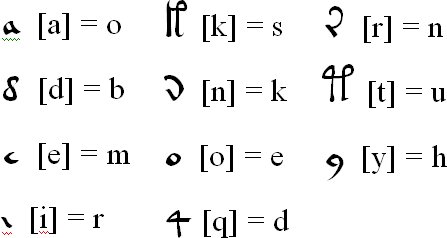Web-journal SCRIPT (est. 2009) aims to publish articles / videos / pictures / (OK, pretty much anything, really) on “abject textual forms including: code arrays, asemic writing, graffiti, tattoos, and any other marginal(ized) scripted utterance“. Unsurprisingly, for its next issue the editors have put out a call for roughly-5000-word up-to-the-minute belletristic commentaries on the Voynich Manuscript and similar cryptotexts:-
While almost certainly undecipherable (various master WWII code-breakers and modern computers have tried), the Voynich manuscript — a.k.a, the Beinecke Library’s “MS 408” — has arguably more value in abstraction than it would in translation. A word-filled but language-less text; a collection of empty signs; a simulacra of simulacra — one can accept that texts like this may forever remain origin-less and undeciphered. But as such, they offer textual culture something unique: words and text abstracted from the weight of functional representation, semantics, and the other duties language routinely performs. As such, these cryptotexts can be seen as a form of literary abstraction that, like other forms of asemic art, puts a great deal of tension on the graphic/text binary and challenges readers to reevaluate their relationship, and conception of, each.
Articles on, and artistic treatments of, the Voynich manuscript itself are welcome as are those concerned with other failures of cryptanalysis and other texts/language systems that remain undeciphered and/or untranslated.
Doubtless you already know whether or not you are interested…
The editors’ apparent position – that the VMs is probably indecipherable, but that we stand to learn a lot about how we look at such linimal objects from our reaction to them – is something I’m broadly sympathetic to. However, to me the greatest value of the VMs comes from the complicated historical journey we face to reconstruct its fragmented conceptual origins. That is, trying to work out why its meaning continues to evade us should help us to understand the limits of modern thinking and knowledge when applied to difficult historical problems.
All the same, I rather suspect that lumping the Voynich Manuscript in with meaningless writings (whether consciously asemic or not) would be a category mistake: what lies beneath its shiny cryptographic surface is most likely hyperrationality, not anti-rationality or irrationality… three very different things.

